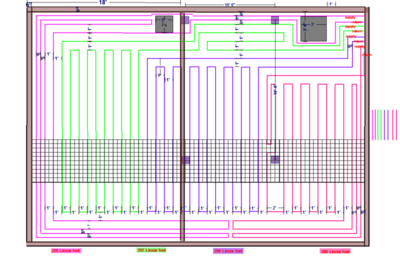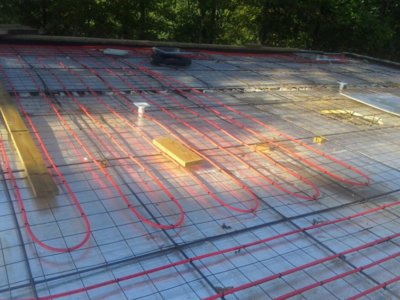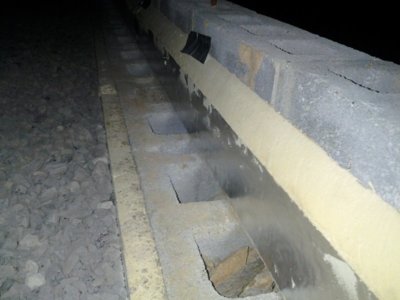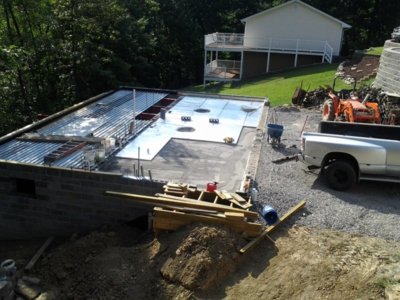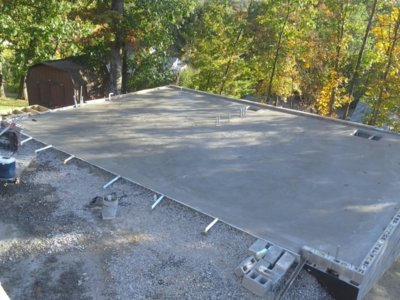Devon if you decide what you want to do let me know...I can draw up the in-floor schematic for the tubing...I used the 6" wire mesh in my concrete pour and tied everything for the floor onto it.
Nice thing is if you make an actual accurate diagram of what your going to install and then install it that way you always know pretty much where they are in the floor in case you ever wanted to attach something else to the concrete...
Here's what I used...my runs were 300' long each...with a total of 4 runs...I concentrated the perimeters closer together as that is where the main heat loss takes place and then spread them apart further in the center of the slab...
Depending on the size you may be able to get away with 2 300' runs which would mean you only need a manifold for 2 connections...
My slab was 28x40 but the inside dimensions were more like 26x38 due to the 12" block walls...
Along with insulation under the slab you will also want to insulate the side of the block or footer to prevent heat loss through the end of the slabs...
No progress on mine in a while...I'd like to get everything for the heat finished up before this winter...
Let me know as it does take a while to draw everything out and then move it around to get equal lengths....
I have no formal design experience for this as I just copied a floor plan that was used on a commercial project I was working on...then tweaked that around to make it work for what I needed...
View attachment 751132 View attachment 751133 View attachment 751134 View attachment 751135 View attachment 751137

